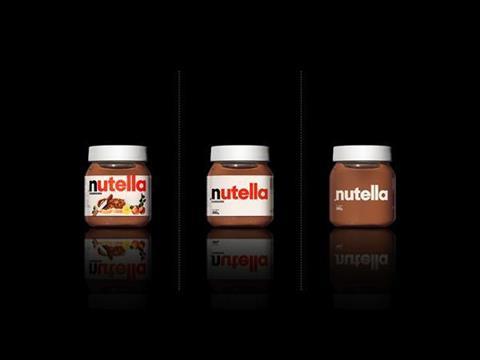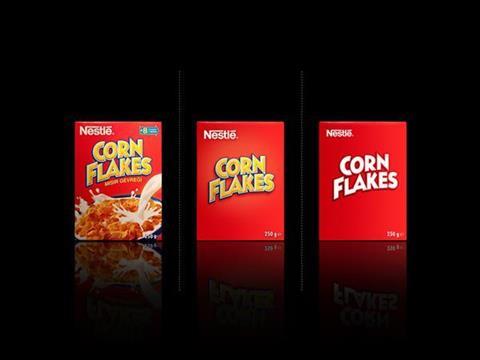
Minimalist packaging design has seen a massive growth in popularity in recent times, with a number of key brand owners rethinking iconic packs and branding choices. In this article, Naomi Stewart, marketing manager at Easyfairs, examines the risks and rewards of a less-is-more aesthetic that counts indifference and irrelevancy among its perils.
Design, like many things, is cyclical. And that cyclical nature of trends in design, especially in branding and packaging, is about to reach warp speed.
Big, bold, and bright are the three packaging Bs that many brands have lived by. But eye-catching isn’t always the way to go. Among the technicolour insanity of modern packaging, a new trend has been born: simple packaging design. And it remains an enduring conversation point.
As buyers look for functional yet appealing packaging designs, brands must consider trends at both ends of the design spectrum.
You’ve seen them, and you buy them, and you may even love them: brands that strip away all unnecessary packaging graphics and messaging in service of an unvarnished, anti-branding, ingredients-first message.
To some, it even delivers simplicity and clarity for consumers while communicating a distinct personality and credible, relatable purpose. Then there are those that point to the unwelcome scourge of minimalism threatening consumer brands.
But if there’s one thing we can all agree on, its that minimalism is a difficult balance to find in design.
Not much to it
Minimalist packaging design has taken the industry by storm, dominating retail industries like luxury products, cosmetics and fashion. But one of the best things about minimalist packaging is that it’s versatile, easily customisable, and can be used in virtually any industry.
Simple, clean, and less noisy than other products within a respective category, minimalism can be characterised as a pared-back, polished aesthetic. Authentic and pure. No bells and whistles.
Minimalism involves simplifying elements and the stripping back of those elements left. Shapes, forms, illustrations, colours, and types that feel unnecessary or useless are left out. Only the bare minimum is kept that still can convey the brand message.
Luxury minimalism strips back to a minimum, allowing us to concentrate on what is necessary. It is based on the functionality and aesthetic of objects, seeking to enhance them, often by using sought-after materials and innovative technology.
One of the ways luxury minimalism can enhance our wellbeing is by reconnecting us with the natural world. We all have neurological preferences for natural materials and colours, representing safety and sustenance.
In the blink of an eye
Modern brands have only around a split second to make an impression before consumers’ attention is called elsewhere. This means it’s often smarter to choose minimalism because a simpler design requires less brain processing to process it fully.
There is no advantage to overwhelming consumers with too many design elements and creating a cluster in your packaging design. Rather, choosing minimalist designs can have many benefits: for beginners, it portrays your brand as transparent and honest with consumers. Secondly, it makes your products appear organised and refined; minimalist designs highlight the top benefits that make your products distinct and the ultimate best buy on the shelf.
Minimalism makes you feel happy with less. It is the aesthetic of not including more information than necessary in product design. It often contains small letters, no iconography other than a company logo, and only a single colour.
Your consumer can quickly grasp the onus of your business when you use minimal packaging, prioritise your messaging, and move on promptly to making a purchase decision.
It increasingly involves deftly combining the environmental impact of the package and the usability and beauty of your package in a clever, reusable, unique package. Simplicity can be powerful. It aligns with the product’s ingredients or a business’s green credentials, using earthy tones and eco-friendly materials to communicate its values.

One key consideration is how well minimalism can compete as an artistic style in the food packaging industry. After all, stripping one element too far can disrupt what is supposed to be an emotional packaging experience.
Your first risk is not standing out on the shelf. If your packaging is too simple and stripped back, there’s the chance that it may not stand out against your bolder competitors. If you want to position your brand as ‘premium’ but priced competitively, your customer may be put off by thinking it is far more expensive than it is at first glance.
Poorly thought-out minimalism can simultaneously slip into bland branding. Our job is to ensure that we understand consumer shifts and tap into those through impactful and effective design that lasts and isn’t just a fleeting trend.
When considering marketing for minimalism and a scrupulous audience, it’s important to emphasise to the customer that they’ve made the best choice by picking your brand. That’s where an insatiable appetite for new insight can set you apart.
And in this space, nothing comes close to London Packaging Week. Its credentials in breaking down what the next 12 months and beyond have in store for the world of packaging design, branding, and material innovation, are second to none.
From rocking your on-shelf appeal and using packaging to stand for something to the importance of clear messaging, value perception, and environmental considerations, many visitors return to LPW time and again to meet, connect and collaborate.
Saying the most with the least
If your company has a unique brand colour or shade that makes people think of you, incorporate it. Packaging doesn’t have to be white or neutral tones.
A box with nothing but your logo is a great way to draw attention to your brand. With nothing else in the way, your customers are more likely to remember your logo and have a greater brand recall.
Smooth, glossy packages have been the industry standard, but minimalist packaging has literally thought outside the box. Many minimalist designs incorporate multiple layers, raised edges, dabbled paper materials, and even mimic the feeling of natural materials like wood or grass.
A minimalist design can be a great choice for brands looking to convey a sleek and modern image, often associated with high-end products that exude sophistication and luxury. Adding sleek lines to your design is still a tried-and-tested way to catch the eyes of your customers.
They show that you’ve put the time and effort into designing something sleek, sophisticated, and modern for your products. These are great for luxury products like cosmetics and fashion.
Minimalist packaging design is about how clever you can be. Try out different tweaks, new packaging shapes, and unconventional typefaces. Think of ways to make the package less distracting or less heavy.
Through minimalist design, it is possible to successfully cultivate a connection between products and a feeling of modernity and innovation. Focusing on specific information and fewer graphic elements creates a clean, sophisticated image that appeals to consumers who value simplicity and elegance.
Through being as selective with your marketing and branding as audiences are today with their purchasing, you’ll establish a loyal customer base that’s engaged, happy to purchase from you repeatedly and spontaneously recommend you to like-minded others.
If you liked this article, you might also enjoy:
The Lidl approach to packaging sustainability
How did Brazil achieve its 100% aluminium can recycling rate – and can it be replicated in the EU?
Experts have their say on the EU’s Packaging and Packaging Waste Directive revisions
A deep dive into the most important packaging sustainability trends and solutions












No comments yet